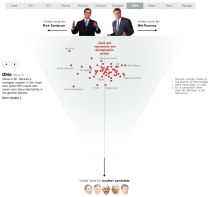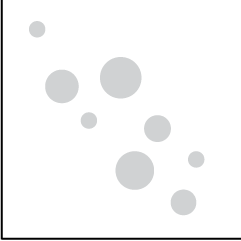Aaron Parecki, co-creator of location platform Geoloqi, has collected his location every few seconds for over three years. He put his data on a map.
Approximately one GPS point was recorded every 2-6 seconds when I was moving, and these images represent about 2.5 million total GPS points. Collectively, they represent a data portrait of my life: everywhere I’ve been and the places I’ve been most frequently. The map is colored by year, so you can see how my footprint changes over the years, depending on where I live.
We’ve seen projects like this a few times before (Hey, Andy, where’s your 2011 map?), but the longevity still surprises me, in a good way. (I think I’ve got this quantified self thing for the masses figured out. Don’t even bother mentioning tracking, self-improvement, or the gadgets. Just show them stuff like this and attach some sentimental value, and there you go.)
[via infosthetics]




 As a complement to Shan Carter’s
As a complement to Shan Carter’s 
 Visualize This: The FlowingData Guide to Design, Visualization, and Statistics (2nd Edition)
Visualize This: The FlowingData Guide to Design, Visualization, and Statistics (2nd Edition)










